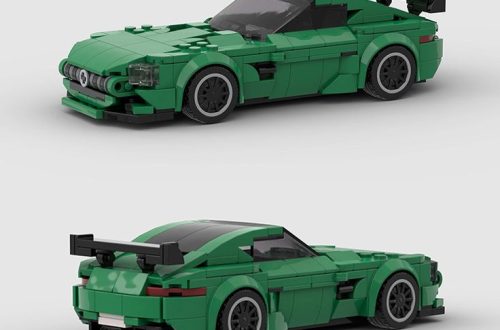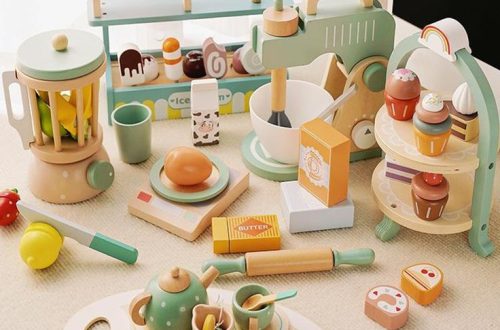Understanding the Basics of a Rubik’s Cube
To master the trick to solve Rubik’s Cube, start with the basics.Understanding its structure and how it moves is crucial. Each Rubik’s Cube has six faces covered by nine stickers, with a unique color for each face. The cube twists around its central axes. This allows the pieces to move and shuffle around.
The Structure and Movement
Each Rubik’s Cube consists of 26 smaller cubes, called ‘cubies’. There are center pieces, edge pieces with two colors, and corner pieces with three colors. The centers don’t move, and they define the color of each side. Learn how these pieces move. Practice twisting the layers. Notice how the cubies shift and aim to form a solid color on each face.
Notations and Cube Terminology
Notations are essential for learning algorithms. They use letters to represent cube faces: U (Up), D (Down), L (Left), R (Right), F (Front), B (Back). Add an apostrophe for a counter-clockwise turn (e.g., U’). A number 2 means a half-turn (e.g., U2). Cube terminology also includes ‘algorithm’, ‘solve’, and ‘scramble’. ‘Algorithm’ refers to a sequence of moves solving a specific part of the cube. To ‘solve’ is to align all colors correctly. ‘Scramble’ involves twisting the cube randomly for a new challenge. Embed these terms into memory. They will help you follow guides and understand solutions for efficient cubing.
Common Mistakes to Avoid
When you’re attempting the trick to solve Rubik’s Cube, certain pitfalls can hinder your progress. Identifying and avoiding these common mistakes is as important as learning the right moves. Efficient cubing is not just about speed; it’s about precision and strategy.
Incorrect Finger Tricks
One prevalent error among beginners is the use of incorrect finger tricks. Finger tricks are a series of hand movements that help you turn the cube faster. However, improper technique can lead to slower solving times and even strain injuries. Focus on learning finger tricks that are comfortable and help maintain a steady pace. Avoid aggressive twisting and opt for smooth and controlled motions. Consistently practice the correct finger placements and movements.
Overlooking Simple Solutions
While complex algorithms are essential, don’t overlook simple solutions that can save time. Beginners often miss easier moves while focusing on memorizing lengthy algorithms. It’s essential to look for opportunities to simplify the solve. For instance, solving a face by aligning the middle layers can often be quicker than you might expect. Keep an eye out for patterns that can be solved with fewer moves. As you master these tricks to solve Rubik’s Cube, you’ll find that occasionally less is indeed more.

Essential Algorithms for Beginners
To grasp the trick to solve Rubik’s Cube for new cubers, it’s crucial to begin with some core algorithms. These sequences of moves are the backbone of any solving strategy and are the first step toward improving your solve times.
The Cross, Corners, and Edges
Start with the Cross. Aim to form a plus sign on one face, aligning the edge pieces with the center colors. This sets you up for the rest of the solve. Next, position the Corner pieces. These should match the cross’s edges and the center pieces of adjacent sides. Edges come next; place them correctly between the corners to complete the first two layers. Efficiently executing these moves can dramatically reduce your overall solve time.
Key Algorithms for Last Layer
Once you’ve mastered the first two layers, focus on the Last Layer (LL). Begin with algorithms to orient all the Last Layer pieces, making a uniform color on the top face. This is known as OLL (Orientation of the Last Layer). Afterward, apply PLL (Permutation of the Last Layer) algorithms to swap pieces around and finish the cube. These key algorithms are varied, but with practice, they’ll become second nature. Practice these steps diligently, and you’ll notice a significant improvement in your Rubik’s Cube-solving ability.
Advanced Techniques for Speedcubing
Once you’ve mastered the basic algorithms and eliminated common solving errors, it’s time to level up your skills with advanced speedcubing techniques. Speedcubing isn’t solely about solving the cube; it’s about solving it as quickly as possible. This involves learning and integrating more complex strategies which can significantly improve your times.
F2L (First Two Layers) Tricks
F2L stands for First Two Layers, and mastering this method can give you a major edge. The trick lies in pairing up the corner and edge pieces of the first two layers simultaneously. This step reduces the number of moves and thus decreases solving time. Here’s how to do it:
- Identify a corner piece and its corresponding edge piece.
- Move them to the top layer, ensuring they are not in their final position.
- Apply the F2L algorithms to pair and insert them together into their correct location.
Remember, F2L requires a good understanding of the cube’s movement. Practice this until your moves become fluid and intuitive. Don’t rush; speed will come with muscle memory.
OLL (Orientation of the Last Layer) and PLL (Permutation of the Last Layer)
After nailing F2L, advancing to OLL and PLL is your next step. OLL trick involves orienting all the pieces of the last layer to have the same color facing up. Following are the steps:
- Identify the pattern on the upper layer.
- Choose the correct OLL algorithm for that pattern.
- Execute the moves to orient all of the Last Layer’s pieces correctly.
Post-OLL, you’ll need to permute the Last Layer’s pieces, which is known as PLL. This aligns each piece in its final position using an additional set of algorithms.
- Look for the recognizable PLL case on your cube.
- Apply the corresponding PLL algorithm to solve the Last Layer completely.
Both OLL and PLL have several variations, and knowing them can help you solve any scramble effectively. Add these to your practice regime and see your solve times tumble. Learn the algorithms thoroughly and aim to execute them without hesitation.

Practice Strategies for Improvement
As you learn the trick to solve Rubik’s Cube, regular practice is key to refining your skills. To improve your solving times and become more proficient, you must engage in targeted practice strategies. These strategies involve timed solves and specific drills tailored to the parts of the cube you find most challenging. Memory techniques are also crucial for mastering the many algorithms necessary for advanced solving.
Timed Solves and Drills
Timed solves are an excellent way to track your progress and push your limits. Use a timer to measure how long it takes to complete the cube and aim to reduce this time with each session. Drills, on the other hand, focus on repeating certain sequences or techniques. These could be specific algorithms, finger tricks, or parts of the cube, like the F2L or OLL/PLL sequences. By drilling these elements, you develop muscle memory and improve your solve speed naturally over time.
Here are some tips for timed solves and drills:
- Set a timer for each solve and record your times.
- Focus on one type of drill at a time to master it fully.
- Repeat drills to improve fluidity and reduce hesitations.
- Challenge yourself by setting time goals for certain drills.
- Use visualization to anticipate moves during drills.
Memory Techniques for Algorithms
Remembering algorithms can seem daunting, but with the right techniques, it can become much easier. Start by breaking down algorithms into smaller chunks that are easier to remember. Use mnemonic devices, or associate moves with familiar patterns or stories. Practice the algorithms frequently, both with and without the cube, to commit them to memory.
Some effective memory techniques include:
- Chunking: Break algorithms into ‘chunks’ or groups of moves.
- Association: Link algorithms with visual or verbal cues.
- Repetition: Consistently practice algorithms to reinforce memory.
- Spaced repetition: Review algorithms at increasing intervals to boost long-term retention.
- Visualization: Mentally practice algorithms, picturing the cube’s movements.
By incorporating these practice strategies into your routine, you will not only improve your ability to solve Rubik’s Cube efficiently but will also enjoy the process of getting faster and more accurate with each solve.

Resources for Enhancing Your Solve
Whether you’re a novice or a veteran cuber, using resources can sharpen your trick to solve Rubik’s Cube. Tapping into apps and engaging with the cubing community can drastically enhance your solving strategies. Here’s a look at where you might turn to improve your skills.
Rubik’s Cube Solving Apps and Software
Several apps and software exist to assist you in solving Rubik’s Cube. These tools offer interactive tutorials, timers for practice, and algorithm databases. They often come with virtual cubes, allowing you to practice anywhere, anytime.
- Look for apps with step-by-step guides; they are perfect for beginners.
- Use timer apps to track your progress and set new goals.
- Explore software with algorithm trainers to build muscle memory more efficiently.
Apps such as ‘CubeSolver’ and ‘Rubik’s Solve’ can demonstrate solutions and improve your understanding of the cube’s mechanics. These digital aids make the learning process engaging and fun.
Community Forums and Championship Experiences
Connecting with other cubers can motivate and educate. Online forums, such as SpeedSolving.com, are hubs where enthusiasts share tips and tricks. They discuss solving methods, review cubes, and offer support.
- Join discussions to learn from other’s experiences.
- Attend local or world championships to watch and learn from the best.
- Share your own experiences and find mentorship opportunities.
Championship experiences allow you to observe top competitors’ techniques. This exposure can lead to breakthroughs in your own practice. Moreover, competing can boost your confidence and solving speed through real-time pressure. It’s not only about winning; it’s about learning and improving together.
Whether it’s through technology or community interaction, resources are plentiful. They help refine the trick to solve Rubik’s Cube and make the journey more rewarding.





